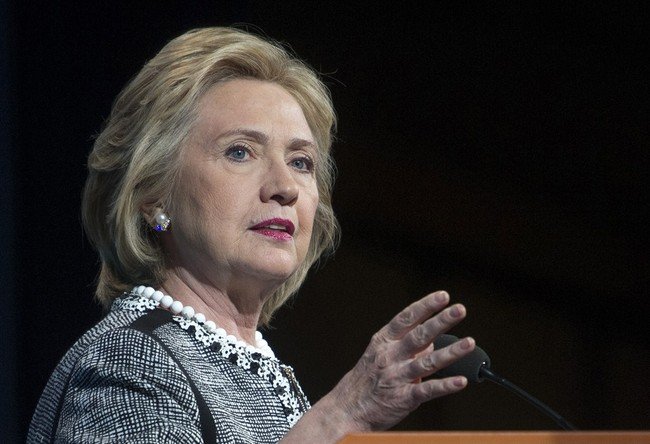Last week, I laid out a nightmare scenario for Republicans in 2016 – not one that seems likely, but one that can be extrapolated based on current polling.
In that spirit, let me lay out a nightmare scenario for Democrats in 2016 – again, an unlikely but plausible extrapolation.
First of all, it assumes that Hillary Clinton is not the Democratic nominee or that her poll numbers have dropped dramatically (they have dropped somewhat over the past year and may drop further).
It also assumes that voters’ attitudes toward the Obama administration will remain roughly the same as today – 44% approval for the president.
At this point, the Democratic Party has a grave problem. Like the Republican Party after its collapse in 2006 and 2008, the Democratic Party, after its collapse in 2010 and only partial recovery in 2012, has very few credible presidential candidates other than Clinton.
Polls comparing other Democrats with potential Republican candidates are fragmented and scant. But it shows that Joe Biden, probably well known as the incumbent vice president, is doing well with Obama’s approval and Clinton’s more.
In polls over the past six months, Biden averaged 32% of the vote over Chris Christie, 31% over Jeb Bush and Marco Rubio and 29% over Paul Ryan.
I haven’t seen polls showing other Democrats (except Clinton) doing better. The potential candidates – Maryland Gov. Martin O’Malley, New York Gov. Andrew Cuomo and former Montana Gov. Brian Schweitzer – are little known across the country. The first two set records appropriate for largely Democratic states, while Schweitzer’s home state has just three electoral votes.
In election years, when a president retires, a vote for his party’s candidate almost always reflects approval of the incumbent president. To find an exception, you have to go back to 1896, when Grover Cleveland rejected Democratic candidate William Jennings Bryan.
During this period, only three incumbent candidates of their party gained significant leads in the popular vote – Theodore Roosevelt, Calvin Coolidge, and Ronald Reagan.
The numbers don’t look good for Democrats right now. The Pew Research Center reports that 65 percent would like the next president to offer different policies and programs than the Obama administration, while only 30 percent would like Obama’s successor to offer similar policies.
That’s only slightly better than voter response to George W. Bush’s policies at this point in the 2008 cycle.
Pew’s numbers are eerily similar to the 1920 election results, which was the largest presidential party rejection in history. The president at that time was Woodrow Wilson, and his party’s candidate, James M. Cox, won only 34 percent. votes. Republican Warren G. Harding won 60 percent and carried all non-Southern states.
Wilson and Obama have some things in common. Both were content to live in their university communities. Both had minimal experience in high political positions. In both cases, Democratic Congresses passed critical legislation in their first terms. Both were cheered by thousands of crowds in Europe.
Wilson led the nation to victory in World War I, but his last two years were disastrous. He suffered a disabling stroke. His Treaty of Versailles was rejected by the Senate. The nation was hit by inflation and recession, waves of strikes, race riots and terrorist attacks.
The voters’ response was the collapse of the Democrats in 1920. It wasn’t because of a destitute ticket. Cox was a three-term Ohio governor who created the Cox Communications empire; today his 94-year-old daughter is worth $12 billion. His running mate was Franklin D. Roosevelt.
The 2016 Democratic ticket, while perhaps weaker, probably won’t do too bad. Americans currently vote mostly for straight tickets. Even in 2008, 46 percent voted for John McCain.
And certainly everyone hopes that the nation will not experience disasters like those of 1919 and 1920. But this election is a reminder that the party can hit rock bottom.
Democratic candidates have received at least 48 percent of the vote in the last five presidential elections, dating back 20 years. Obama left them stronger than ever in inner cities and college towns.
But the party retreated elsewhere. Bill Clinton in 1996 had better percentage margins than Barack Obama in 2012 in 36 states. A result that is weaker than Obama in central cities and weaker than Clinton elsewhere could fall well below 48%.
I don’t think the Democrats’ nightmare scenario is likely. But some numbers point in that direction.


